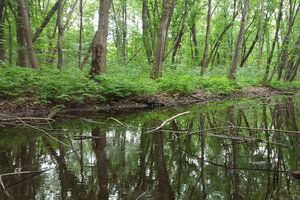
Champagne stream branches off Papineau-Lavoie. It follows Montée Champagne, west of Highway 13 and crosses an agricultural area up to its stream head in Sainte-Dorothée. It flows for a total length of 3,9 kilometers. Seven sampling stations were set up on this stream. The first section is located in an agricultural field located to the north-west of Montée-Champagne. It then flows through a forested swamp behind residents on Montée Champagne and dry woods located south of Saint-Martin boulevard. The stream then crosses Principale road and merges with Papineau-Lavoie stream at the road intersection between Bigras and Principale streets.
The course of this stream was altered and deviated to fit the nearby agricultural and residential land uses. There are no barriers other than the culvert to cross the Principale street and Montée Champagne.
Results
Data collected in 2014 allowed to compare this stream with Gascon, la Pinière and Papineau-Lavoie streams.
Fluvial habitat
-
Champagne streams stands out by its slow flowing waters due to excess soft sediment accumulations (90%) which make it impossible to cross the stream by foot.
-
Riparian buffer strip index is the highest of all surveyed streams in 2014, probably because it flows through a wooded area.
-
Erosion was noted only in one sampling station, CHAM05.
-
There are 6,4% of its proximity zone occupied by waterproof and sealed surfaces, which is just above the 5% threshold. It is generally recognized that stream health declines between 5 and 15% of non-permeable surface, depending on which index is used.
Water quality
-
Conductivity was measured at 1878 ± 722 μs/cm3 which is the highest value recorded in all the streams.
-
Dissolved oxygen levels were fairly moderate and variable, with an average of 79,7 ± 57,4%. The levels followed an upstream-downstream gradient.
-
All the surveying stations had important coliform bacteria levels (E. coli and others) which make it unsuitable for primary contact for the entire summer season. One can therefore not swim in this stream. For secondary contact, some sites were barely on the threshold line by the end of the summer.
-
Average phosphorus levels reveal a potentially concerning water quality.
Biodiversity
Riparian vegetation
-
European buckthorn, common reed, purple loosestrife and reed canary grass are all introduced and invasive species recorded in many sampling stations.
-
Endangered species such as wild ginger and ostrich fern were recorded.
Benthic macroinvertebrates
-
Papineau-Lavoie and Champagne streams, both in the same catchment, were recorded to have a low habitat quality and high levels of organic pollution.
Ichtyological inventories
-
Papineau-Lavoie and Champagne streams, both in the same catchment, show similar species richness but different abundances which is probably due to the habitat variations.
Conclusion and recommendations
Even though Champagne stream flows through great natural spaces, there are few wildlife species of interest making it a habitat of low productivity with high rates of sedimentation reducing potential benthic macroinvertebrates diversity. Some land-use planning options could definitely improve stream flow and habitat diversification. The natural connectivity with Papineau-Lavoie stream increases the natural regeneration potential and make it an interesting corridor to connect with the Sainte-Dorothée forests located on the west side of Highway 13.
Report (in French)
Ecological characterization report, 2014. Rapport du projet Ruisseaux urbains de Laval 2014-
Conference (in French)
March 17, 2016. Spring meeting of agroenvironmental actors of Lanaudière-Laval (MAPAQ). Présentation du projet Ruisseaux urbains de Laval en zone agricole.
Media publication (in French)
March 7, 2016 –
Press releases (in French)
February 17, 2016 –
July 22, 2014 –
.jpg)
Stakeholders and special thanks
Ecological characterization report, 2013
.png)
(3).png)
Special thanks
We would like to thank all the stakeholders that contributed to the successful realization of this project. We would like to thank the Ministry of Natural Resources and Wildlife for sharing equipment and knowledge and for the contribution of many specialists during sampling and fish species identifications. We would also like to thank the Group for Interuniversity Research in Limnology of UQAM for their expertise, sampling efforts, species identifications of benthic macroinvertebrates in their labs and for sharing equipments to measure physicochemical parameters and fecal coliforms of water samples.
Follow-up report, 2014
(2).png)
Special thanks
We would like to thank all the stakeholders that contributed to the successful realization of this project. Firstly, we thank the ‘’Service aux collectivités’’ and professor Beatrix Beisner’s lab from Université du Québec à Montréal (UQÀM) for their amazing collaboration. We wish to highlight their expertise, sampling efforts, species identifications of benthic macroinvertebrates in their labs and for sharing equipment that allowed for the measurement of physicochemical parameters and fecal coliforms of water samples. We would also like to thank the Ministry of Forests, Wildlife and Parks for sharing equipment and knowledge and for the contribution of many specialists during sampling and fish species identifications. We also thank the Correctional Service of Canada for their contribution in this project by giving us site access for the La Pinière stream located on the federal penitentiary and for their ornithological expertise. Lastly, CRE de Laval wants to thank the City of Laval, the Science Horizons Youth Internship Program of Environment Canada, RBC’s ‘’Eau Bleue’’ program and the financial contribution of the Fondation de la Faune du Québec as well as for their shared data and expertise.



